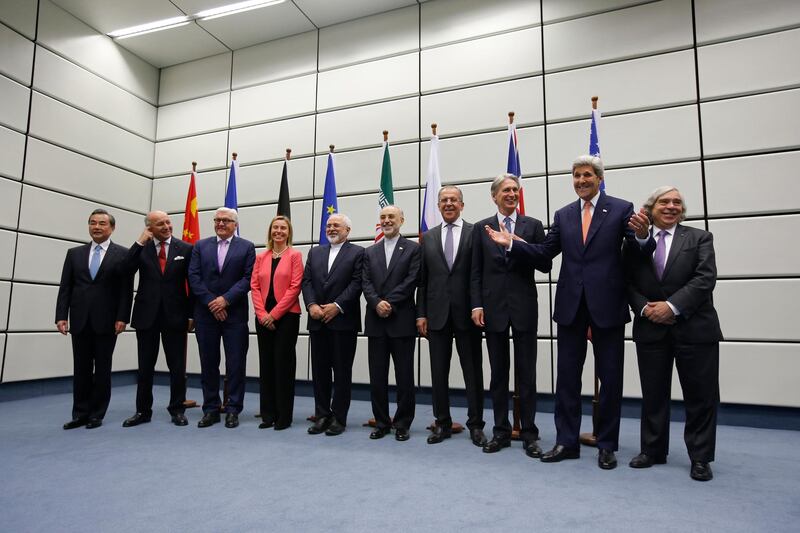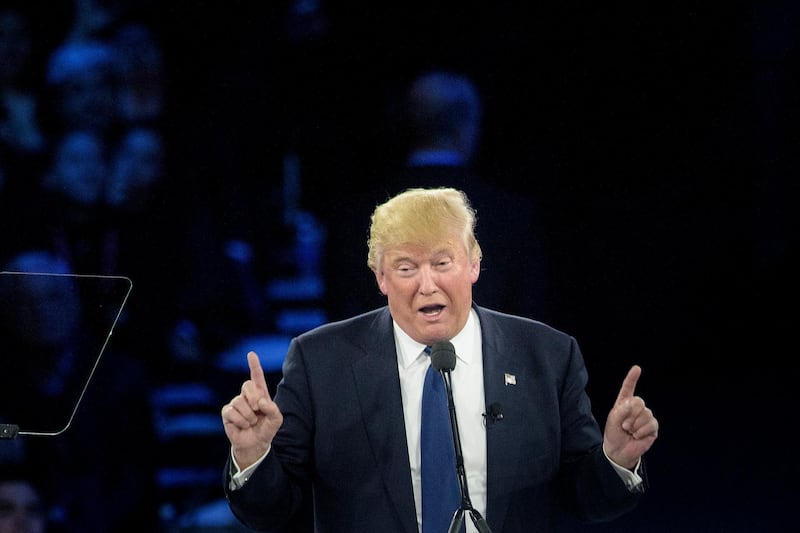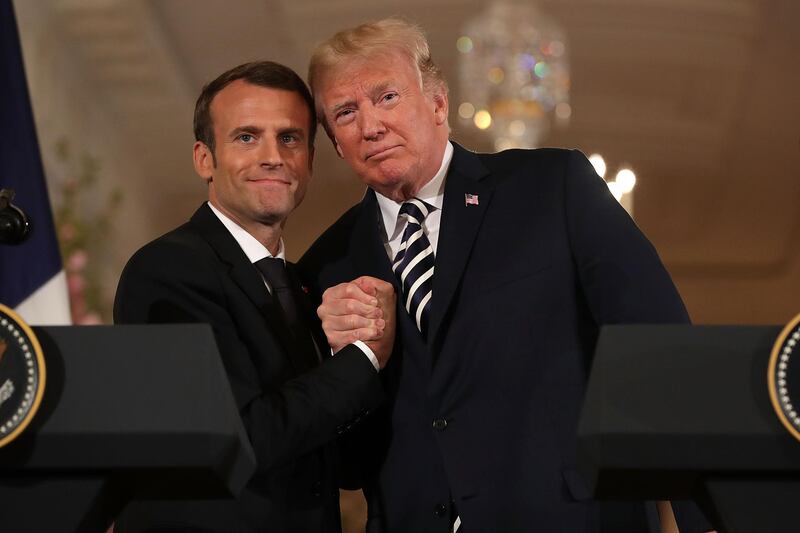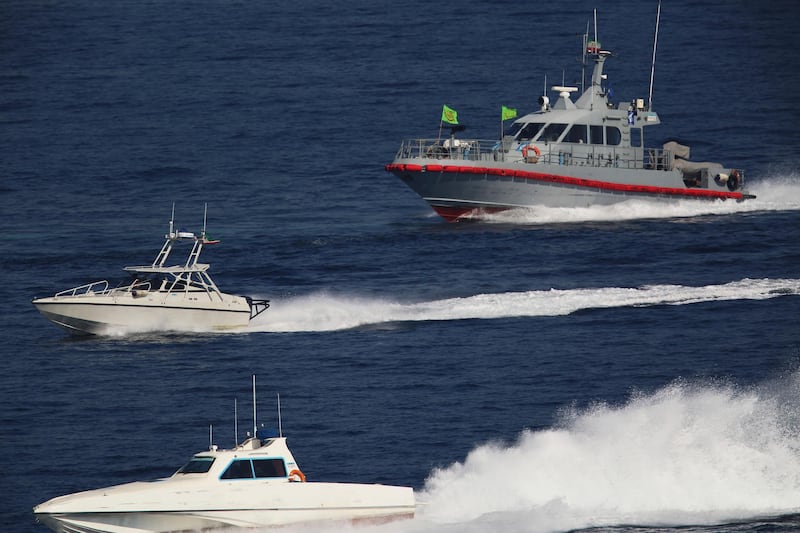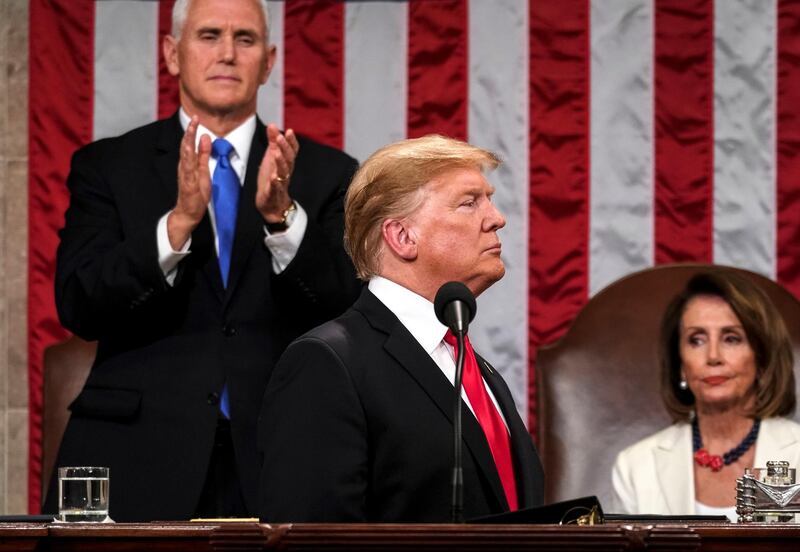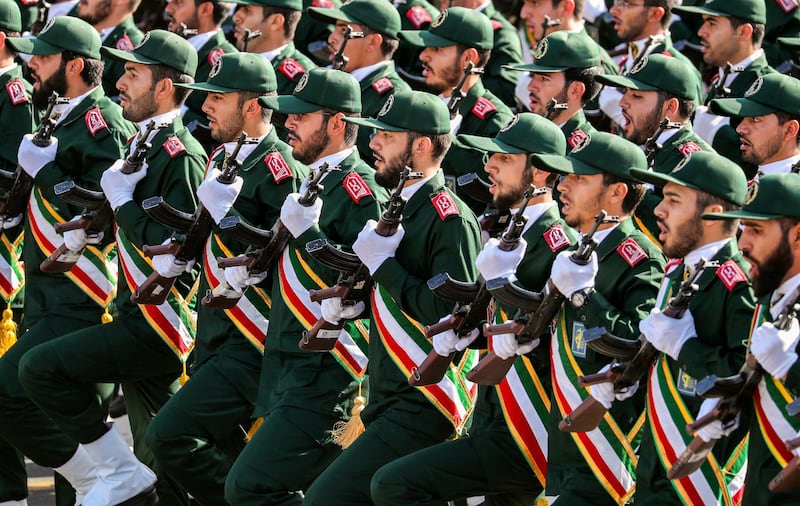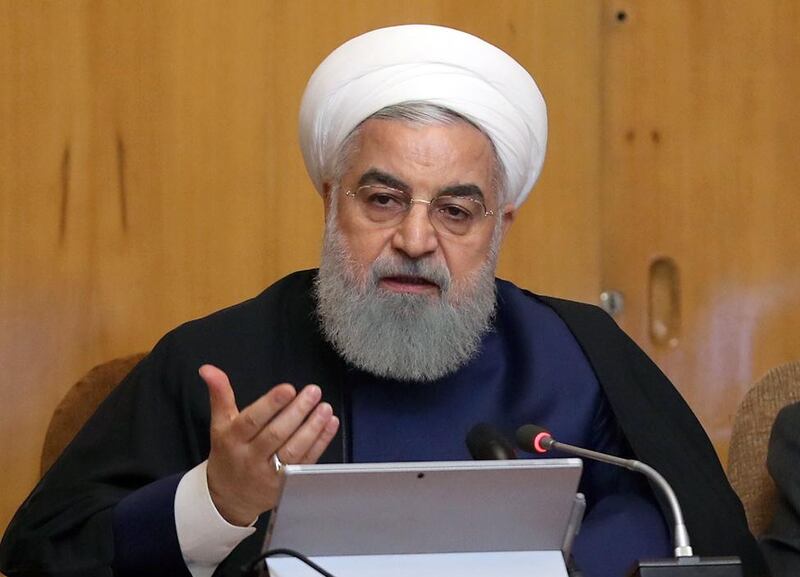Iran will partially withdraw from the 2015 nuclear deal with world powers amid increased economic pressure triggered by US sanctions that were reimposed when President Donald Trump abandoned the agreement last year.
Iranian President Hassan Rouhani said Tehran will give 60 days for signatories to return to negotiating financial and oil deals or it will begin to press ahead with its nuclear ambitions.
Wednesday's move is the latest in a long period of rising tensions between it and Washington.
Here is a timeline of events:
July 14, 2015: Nuclear deal agreed
Iran nuclear deal framework agreed with several world powers: the United States, France, Britain, Germany, Russia and China after 17 days of negotiations. Under the framework, Iran will reduce its nuclear facilities in return for the lifting of economic sanctions.
March 2016: Trump vows to dismantle deal if he becomes president
Presidential candidate Donald Trump says his number one priority is to dismantle the “disastrous deal” with Iran. He frequently refers to the agreement as the “worst deal ever” while campaigning.
January 2017: Iran missle testing
Iran tests a medium-range ballistic missile, prompting the now President Trump to warn Iran it has been “put on notice” for the act.
July 2017: First sanctions under Trump
President Trump warns countries not to do business with Iran at the G-20 Summit. The administration renews the agreement eight days later, but then proceeds to unveil a series of non-nuclear sanctions against Iran.
January 2018: Trump threatens to withdraw
President Trump threatens to withdraw from the agreement if “flaws” are not addressed.
April 2018: European leaders try to persuade Trump
Both French President Emmanuel Macron and German Chancellor Angela Merkel visit the White House to try and persuade Trump to stick with the deal.
May 8, 2018: Trump announces plans to withdraw
President Trump announces the United States plans to withdraw from the Iran nuclear deal and re-impose economic sanctions.
November 2018: Iran sanctions reimposed
The Trump administration announces the reinstatement of all US sanctions which had been lifted under the 2015 nuclear deal, with the exemption of eight oil-buying nations which are granted waivers. The US also adds 700 people and entities to its Iran blacklist.
December 2018: US pressure on ballistic tests
Mike Pompeo, US Secretary of State, says the US "won't stand" for Iran's ballistic missile tests, which comes after Iran admitted a "significant" medium-range ballistic missile test, appearing to breach a UN resolution. Iran's Revolutionary Guard launch war games near the Strait of Hormuz, a day after its boats shadowed the US aircraft carrier John C Stennis through the strategic waterway.
January 2019: EU trade looks to avoid Iran sanctions
The UK, Germany and France create a mechanism for non-dollar trade between Iran and the bloc, enabling the trade of medicines and food to avoid US sanctions on Iran amid its worst economic crisis in almost 40 years.
February 2019: EU warns Iran over missile testing
The EU warns Iran over the progression of its ballistic missile testing and behaviour in the region, saying it is "gravely concerned" over the state's missile activities. President Trump's State of the Union address singles Iran out as the "world's leading state sponsor of terror". And Ayatollah Ali Khamenei, Iran's supreme leader, responds by saying talks with the US can only "bring harm". Later in the month, US Vice President Mike Pence demands European powers withdraw from the Iran deal, and Iran launches a new cruise missile in the Strait of Hormuz, prompting the US and Europe to express concerns over the move.
March 2019: Iran to challenge US sanctions
Iranian President Hassan Rouhani says Iran will file a legal case against US for sanctions, days before the US imposes more, ordering sanctions on 25 people and entities for supporting Iran's Revolutionary Guard.
April 2019: US designates Iran's elite guards a terror group
An official says the US is considering the imposition of additional sanctions, perhaps in May. Days later, it designates the Islamic Revolutionary Guard Corps as a foreign terrorist organisation – a move declared to be "vicious" by Iran's supreme leader Ayatollah Ali Khamenei. Washington later also fails to renew sanctions waivers for the eight countries who were allowed to continue importing Iranian oil – the move is aimed at reducing the country's oil exports to zero. Countries who continue buying Iranian oil will face US sanctions.
May 1: 'All US troops in region terrorists'
Iran designates all US troops in the Middle East as terrorists.
May 4: US will renew key waivers
The US announces it will renew several key waivers that will allow Iran to keep operating a limited civilian nuclear programme. The EU says it is concerned by the decision to revoke some sanctions waivers and extend others for a short period. Iran vows to boost oil exports.
May 6: USS Abraham Lincoln heads to region
The US sends a bomber task force to the Middle East in response to a "credible threat" from Iranian forces.
May 7: EU warns Iran will breach deal
The EU warns Iran is poised to breach the nuclear deal, and says it will reimpose sanctions if Tehran abandons parts of the agreement signed in 2015.
